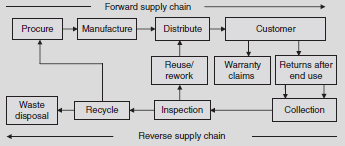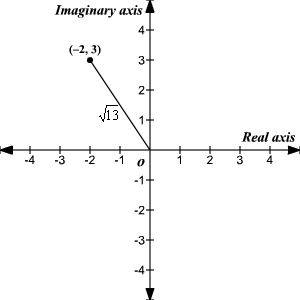How Are Book Value and Market Value Different?Book value simply implies the value of the company on its books, often referred to as accounting value. It’s the accounting value once assets and liabilities have been accounted for by a company’s auditors. Whether book value is an accurate assessment of a company’s value is determined by stock market investors who buy and sell the stock.However, with any financial metric, it’s important to recognize the limitations of book value and market value and use a combination of financial metrics whenanalyzing a company. In theory, BVPS is the sum that shareholders would receive in the event that the firm was liquidated, all of the tangible assets were sold and all of the liabilities were paid.

What does book value mean?
Book value refers to the total amount a company would be worth if it liquidated its assets and paid back all its liabilities. Book value can also represent the value of a particular asset on the company’s balance sheet after taking accumulated depreciation into account.If book value is negative, where a company’s liabilities exceed its assets, this is known as a balance sheet insolvency. Equity investors often compare BVPS to the market price of the stock in the form of the market price/BVPS ratio to attribute a measure of relative value to the shares. Keep in mind that book value and BVPS do not consider the future prospects of the firm – they are only snapshots of the common equity claim at any given point in time.
Price-to-Book Ratio
How is book value calculated?
An asset’s book value is equal to its carrying value on the balance sheet, and companies calculate it netting the asset against its accumulated depreciation. Book value can also be thought of as the net asset value of a company calculated as total assets minus intangible assets (patents, goodwill) and liabilities.The carrying value, or book value, is an asset value based on the company’s balance sheet, which takes the cost of the asset and subtracts its depreciation over time. The fair value of an asset is usually determined by the market and agreed upon by a willing buyer and seller, and it can fluctuate often. In other words, the carrying value generally reflects equity, while the fair value reflects the current market price. For example, real estate owned by a company may gain in market value at times, while its old machinery can lose value in the market because of technological advancements. In these instances, book value at the historical cost would distort an asset or a company’s true value, given its fair market price.Savvy investors are always on the lookout for stocks that are not fully valued or, still better, are grossly undervalued. An important measure of value is the book value per share-total assets minus intangible assets and liabilities divided by the number of outstanding shares. If the price-tobook value per share is less than one, it means the stock is trading below its book value. The book value is literally the value of the company according to its books (balance sheet) once all liabilities are subtracted from assets. The need for book value also arises when it comes to generally accepted accounting principles (GAAP).In other words, it makes at least 15 cents of profit from each dollar of sales. The takeaway is that Coca-Cola has very valuable assets – brands, distribution channels, beverages – that allow the company to make a lot of money each year. Because these assets are so valuable, the market values them far more than what they are stated as being worth from an accounting standpoint. Book value and market value are two fundamentally different calculations that tell a story about a company’s overall financial strength. Comparing the book value to the market value of a company can also help investors determine whether a stock is overvalued or undervalued given its assets, liabilities, and its ability to generate income.
Digging Into Book Value
In other words, the book value is literally the value of the company according to its books (balance sheet) once all liabilities are subtracted from assets. The term book value derives from the accounting practice of recording asset value at the original historical cost in the books.

Book Value Formula
You can arrive at the figure by deducting liabilities from assets (he will be left with shareholders’ equity). Dividing this by the number of shares will give the book value per share.
- Book value simply implies the value of the company on its books, often referred to as accounting value.
- A good measure of the value of a stockholder’s residual claim at any given point in time is the book value of equity per share (BVPS).
- Book value is the accounting value of the company’s assets less all claims senior to common equity (such as the company’s liabilities).
When intangible assets and goodwill are explicitly excluded, the metric is often specified to be “tangible book value”. To calculate tangible book value, we must subtract the balance sheet value of intangibles from common equity and then divide the result by shares outstanding. To continue with the Walmart example, the value of goodwill on the balance sheet is $20.6 billion (we are assuming the only intangible asset material to this analysis is goodwill). The price/TBVPS ratio is around 4 times when Walmart’s K is released.

Spotting Creative Accounting on the Balance Sheet
The Coca-Cola Co. has historically traded at a P/B ratio of 4 to 5. This means that Coca-Cola’s market value has typically been 4 to 5 times larger than the stated book value as seen on the balance sheet. In other words, the market values the firm’s business as being significantly worth more than the company’s value on its books. You simply need to look at Coca-Cola’s income statement to understand why.
Understanding Book Value
A good measure of the value of a stockholder’s residual claim at any given point in time is the book value of equity per share (BVPS). Book value is the accounting value of the company’s assets less all claims senior to common equity (such as the company’s liabilities).In this case, book value is calculated from the balance sheet, and it is the difference between a company’s total assets and total liabilities. For example, if Company XYZ has total assets of $100 million and total liabilities of $80 million, the book value of the company is $20 million. In a very broad sense, this means that if the company sold off its assets and paid down its liabilities, the equity value or net worth of the business, would be $20 million. The book value of a stock is theoretically the amount of money that would be paid to shareholders if the company was liquidated and paid off all of its liabilities. As a result, the book value equals the difference between a company’s total assets and total liabilities.In accounting, book value is the value of an asset according to its balance sheet account balance. For assets, the value is based on the original cost of the asset less any depreciation, amortization or impairment costs made against the asset. Traditionally, a company’s book value is its total assets minus intangible assets and liabilities. However, in practice, depending on the source of the calculation, book value may variably include goodwill, intangible assets, or both. The value inherent in its workforce, part of the intellectual capital of a company, is always ignored.According to these rules, hard assets (like buildings and equipment) listed on a company’s balance sheet can only be stated according to book value. This sometimes creates problems for companies with assets that have greatly appreciated—these assets cannot be re-priced and added to the overall value of the company. When trying to decide whether you should buy or sell a stock, using the book value in conjunction with the market value can be beneficial.
What Is the Tax Impact of Calculating Depreciation?
While the book value of an asset may stay the same over time by accounting measurements, the book value of a company collectively can grow from the accumulation of earnings generated through asset use. A corporation’s book value is used in fundamental financial analysis to help determine whether the market value of corporate shares is above or below the book value of corporate shares. Neither market value nor book value is an unbiased estimate of a corporation’s value. The corporation’s bookkeeping or accounting records do not generally reflect the market value of assets and liabilities, and the market or trade value of the corporation’s stock is subject to variations. If a company’s share price falls below its BVPS a corporate raider could make a risk-free profit by buying the company and liquidating it.
How Dividends Affect Stockholder Equity
However, as the assets would be sold at market prices, and book value uses the historical costs of assets, market value is considered a better floor price than book value for a company. Financial assets include stock shares and bonds owned by an individual or company. These may be reported on the individual or company balance sheet at cost or at market value.Again, we would want to examine the trend in the ratio over time and compare it to similar companies to assess relative value. Put simply, book value represents that part of the accounting value of a business that will be left after debts are paid off.Market value has a more meaningful implication in the sense that it is the price you have to pay to own a part of the business regardless of what book value is stated. Book Value literally means the value of the business according to its “books” or financial statements.
